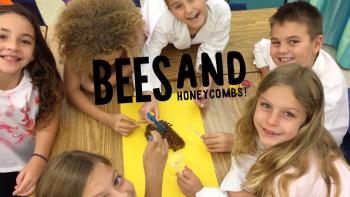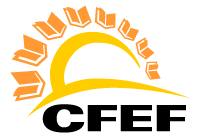
FIND IT FUND IT FLORIDA
Where the Wild Things Are-Insect Life Cycles in Third Grade

- School:
- Pelican Marsh Elementary
- Subject:
- Science
- Teacher:
- Angela Loerzel
- Students Impacted:
- 20
- Grade:
- 3
- Date:
- July 11, 2017
Investors
Thank you to the following investors for funding this grant.
The Skloff Family - $25.00
Perna-Rose Foundation for Hope - $118.50
Goal
Do you remember your amazement the first time you watched a Mexican jumping bean hop around in the palm of your hand? Have you ever marveled at amazing metamorphosis and migration of the Monarch butterfly?
Reading the entertaining picture book, "Crazy for Loco Beans", is a unique way to introduce and engage young third grade students in the process of scientific inquiry. The accompanying activities touch on scientific inquiry and life science standards, as our students explore mystery objects and learn about the life cycle of the jumping bean moth and later compare its life cycle to that of another insect found in Mexico, the Monarch butterfly, their cousins Painted Lady butterflies, and fellow garden inhabitants- Honey Bees and Ladybugs.
What will be done with my students
We will place a jumping bean seed pod in each student's palm and ask them to sit very still while watching the object for one minute. We will not tell them what the objects are. After a few minutes, the heat from the children's hands will cause the larvae and seed pods to move.
We will then give each student a copy of the O-W-L (Observe-Wonder-Learn) chart, a hand lens, a ruler, and one seed pod. Students will then draw the "mystery objects" and then record observations and measurements. Next, they will record their wonderings about the objects. Students will share some of their wonderings with the class, and their inferences about the identity of the objects.
We will then tell students that we have a book to share which may help them solve the mystery. We'll cover up the book cover and explain to them that we want them to make some guesses about what the objects are. We'll have them write down their inferences about the mystery objects as they get clues from the story. Students will think-pair-share with a partner and explain what they learned about the objects from the reading.
Initially the book, "Lucas and His Loco Beans" will be read aloud in order to lead students through a scientific inquiry. This bilingual rhyming text tells the tale of a young boy who learns about the life cycle of the Mexican jumping bean moth from his grandfather. The story is told primarily in English, interspersed with Spanish words and phrases.
Accompanying activities touch on scientific inquiry and life science standards, as students explore mystery objects and learn about the life cycle of the jumping bean moth and later compare its life cycle to that of another insect found in Mexico and Southwest Florida, the Monarch butterfly.
We began a beautiful butterfly garden several years ago and have cultivated a lively butterfly habitat for Monarch and Painted Lady butterflies. We'll read additional books such as "Gotta Go! Gotta Go!", "Where Butterflies Grow", "Hurry and the Monarch", and "From Caterpillar to Butterfly". These engaging books and a butterfly pavilion will provide multiple enrichment activities centered around the life cycles of the Jumping Bean Moth, Monarch, and Painted Lady butterflies, Bees and Ladybugs. We will enjoy creative writing and artistic activities as well as our science inquiry projects.
Benefits to my students
This year-long project will benefit approximately 20 students. Students will be engaged and their learning will be enriched through these memorable experiences.
Connecting to the Standards:
Science as Inquiry
--Abilities necessary to do scientific inquiry
Life Sciences
--Characteristics of organisms
--Life cycles of organisms
--Organisms and environments
Budget Narrative
All items have been priced at the most cost effective source. Coupons and teacher discounts will be used to keep costs at a minimum.
Items
| # | Item | Cost |
|---|---|---|
| 1 | Mexican Jumping Beans 60 count) | $25.00 |
| 2 | Ladybugs (Half Pint) | $22.50 |
| 3 | Painted Lady Classroom Kit, 35 larvae | $21.00 |
| 4 | Host Plants-Milkweed | $20.00 |
| 5 | Nectar Plants-Penta, Vinca | $20.00 |
| 6 | Local Honey Bees-Honey Comb | $35.00 |
| Total: | $143.50 |





Share
Please share this page to help in fulfilling this grant.
Email to a Friend